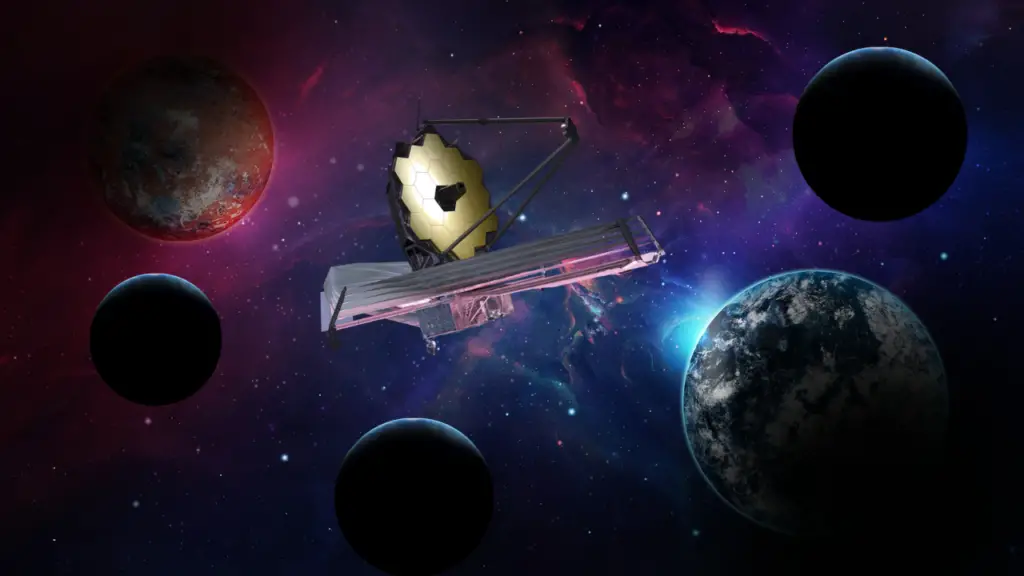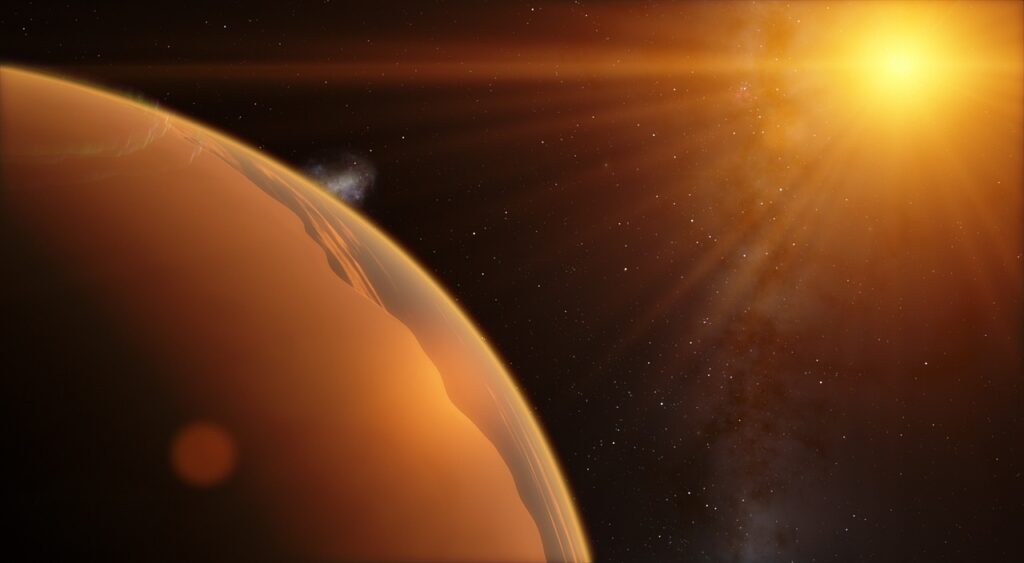Exoplanets are planets orbiting other stars other than the sun. Up to date, about 5,000 exoplanets within the milky way galaxy have been discovered so far using our observatories. Studying these distanced planets could help us understand more fascinating facts about our home planet, Earth. As James Webb Space Telescope has commenced its operation to observe the vast nature of the Cosmos, NASA has decided to look closer to see what exoplanets are made up of.
Since we can learn more about exoplanets from their clouds alone, the James Webb Space Telescope was meant to study these clouds and uncover new fascinating discoveries for us. Most exoplanets have similar clouds to Earth, implying that liquids and solid droplets are suspended in their atmosphere.
Some of these exoplanets orbit closer to their stars, attracting a scorching temperature of thousands of degrees towards their surfaces. This implies that the liquid materials that make up their clouds are vaporized. This hazardous condition makes it impossible for clouds of water to exist in these exoplanets.
Hence, exoplanets clouds are made up of rocks because of the extreme conditions surrounding their existence. These clouds of rocks are continuously heated up by scorching heat coming from their host stars. It is possible to get molten rocks, liquid gas, sapphires, and molten irons under certain levels of high temperature.
With the presence of these fascinating elements, you could tell that the clouds of exoplanets are made up of precious stones and gems. But should you be attracted to the exoplanets because of these precious stones? Before you make up your mind about planets, you should think of the extreme conditions surrounding their existence.
Why Most Exoplanets are Completely Inhabitable for Humans
Under certain conditions, these exoplanets experience extreme pressure, temperature, and wind, that are far beyond the extreme conditions of any celestial bodies within the solar system. On Earth, scientists have recorded the fastest wind during hurricanes to travel at 250 miles per hour (400 kilometers per hour).
However, scientists have measured exoplanets’ winds to surpass 5,000 miles per hour (8,000 kilometers per hour). These high-speed winds carry exoplanets’ clouds of molten rocks and glasses around the planets. This implies that the movement of these clouds rocks and glasses is significantly out of control.
How NASA James Webb Space Telescope is Studying the Clouds of Exoplanets
Exoplanets are trillions of miles away from earth. Hence, we actually need a more sophisticated space technology to look far beyond our reach to uncover hidden facts about these distanced space worlds. The good news is that NASA’s James Webb Space Telescope is about to change the way we viewed exoplanets.
This advanced space telescope enabled us to look closer to study the atmosphere of these exoplanets. The telescope is designed with infrared technology that can observe colors beyond human vision. Its spectroscopic sensitivity and broader wavelength coverage have enabled the space telescope to actually look closer and study the science of exoplanet clouds.
Scientists are already excited about what the James Webb Space Telescope has discovered about the clouds of exoplanets. However, they are hopeful about what the telescope will still discover in the future.
Conclusion
Studying exoplanets have remained one of the primary goals of the NASA James Webb Space Telescope. Scientists are optimistic regarding the outcome of this observation. What do you think about what the James Webb space telescope will discover about exoplanets?




